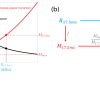Description
Code to predict the radius of maximum wind (Rmax) in a hurricane from the radius of 34kt wind, maximum wind speed, and storm center latitude, as described in Chavas and Knaff (2022). The model is fast (runs in < 1s on a personal laptop). It can be used to provide first-order prediction of Rmax in real-time operational forecasting as well as for synthetic storm wind fields used in risk assessment. The model is an empirical equation that based on theory governing the physics of angular momentum in a hurricane but whose coefficients are fit to observational data to minimize bias and optimize its application to real storms in nature.
Ref: Chavas D.R. and J. A.. Knaff (2022). A simple model for predicting the tropical cyclone radius of maximum wind from outer size. Wea. For.. https://
Cite this work
Researchers should cite this work as follows:
- Daniel Robert Chavas (2022). Code file for Rmax prediction model and relevant data used in the analyses (Chavas and Knaff 2022, Weather and Forecasting). (Version 1.1). Purdue University Research Repository. doi:10.4231/WMMS-XY76
Tags
Notes
Initial version (v1.0) includes a simple MATLAB file to calculate Rmax from R34kt, given Vmax and storm center latitude, as described in Chavas and Knaff (2022). Code was run on MATLAB R2018b.
Version 1.1: Updated to correct version of Fig 2a to fix incorrect version discovered after proof was returned but before official publication. Code+figures updated accordingly here.
